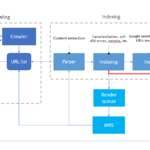Muscle Memory, Re-Training, and Sarcopenia: An In-Depth Exploration
Understanding Muscle Memory
Muscle memory, despite its name, does not imply that muscles have memory in a literal sense. Rather, it is a term used to explain why it becomes easier to regain muscle mass after a period of detraining (a break from exercise) compared to when muscles were initially built. The theory is based on the concept that once muscle fibers have been trained and grown, the changes made during the training process (specifically the formation of additional nuclei in muscle cells) facilitate faster rebuilding when training resumes.
How Do We Build Muscle for the First Time?
Muscles are made up of fibers, which are large and multinucleated, meaning they contain more than one nucleus. The presence of multiple nuclei allows the muscle fibers to handle the substantial demands of synthesizing the proteins needed for growth. When we engage in resistance training, especially with progressive overload (gradually increasing the weight or intensity of exercises), muscle fibers sustain small amounts of damage. This damage prompts the body to repair the muscle, making it stronger and bigger over time.
The process begins when satellite cells (a type of stem cell located outside muscle fibers) are activated and migrate to the damaged muscle fibers. These satellite cells then fuse with the muscle fibers, contributing their nuclei to the muscle cells. As a result, the muscle fibers gain more nuclei, which enhances the ability to synthesize proteins and repair muscle tissue. This increased protein production leads to muscle growth, making the muscle fibers larger and more powerful.
What Happens When We Stop Training?
When training ceases, the body no longer receives the stimulus to maintain or build muscle. As a result, the rate of muscle protein breakdown begins to outpace muscle protein synthesis, leading to muscle shrinkage. Over time, muscles may become weaker and smaller as the body adapts to the reduced demand.
However, a key point to note is that the additional nuclei gained during previous training do not disappear during a period of detraining. This is crucial because the process of adding new nuclei to muscle cells is a complex and time-consuming process. Therefore, once the body resumes training, the presence of these additional nuclei accelerates muscle growth, as it allows the muscle cells to quickly ramp up protein synthesis and rebuild muscle mass more efficiently.
This phenomenon explains why individuals with a history of resistance training experience quicker muscle growth when they return to training after a break, compared to someone who is building muscle for the first time. The hardest part of muscle building—adding new nuclei to muscle fibers—has already been accomplished, which significantly reduces the time and effort required to regain muscle size and strength.
The Benefits of Resistance Training Across the Lifespan
Resistance training offers several benefits beyond just muscle growth. Studies have shown that consistent resistance training leads to permanent physiological changes in the body, meaning that muscle mass gained during youth with proper nutrition and resistance training can be preserved even as we age. This is particularly important because muscle mass is a key factor in overall health and functionality, particularly as we age.
Sarcopenia: Age-Related Muscle Loss
Sarcopenia refers to the age-related decline in skeletal muscle mass and function. This condition is common in older adults and is one of the primary contributors to the loss of independence and functional decline that many elderly people experience. Sarcopenia is driven by several factors, including:
- Loss of neuromuscular junctions: These are the points of contact between motor neurons (nerves that send signals to muscles) and muscle fibers. As people age, the number of neuromuscular junctions decreases, which hampers the ability of muscles to contract effectively.
- Reduced satellite cell activity: Satellite cells are responsible for providing new nuclei to muscle cells, which is essential for muscle growth and repair. As we age, the number of active satellite cells decreases, making it harder for muscles to rebuild after injury or strain.
- Hormonal changes: As people age, there are changes in hormones such as growth hormone, testosterone, and estrogen, which play vital roles in muscle maintenance and growth. The decrease in these hormones can contribute to muscle loss.
Despite these factors, resistance training can counter the effects of sarcopenia. By regularly engaging in resistance exercises, older adults can increase the activation of satellite cells, improve neuromuscular junction function, and stimulate muscle protein synthesis, all of which help to preserve or even increase muscle mass as they age. Proper resistance training not only helps maintain muscle mass but also improves overall functional capacity, enhancing strength, balance, and mobility, which in turn supports independence and reduces the risk of falls and injuries.
Resistance Training for the Elderly
Introducing resistance training into an older adult’s lifestyle can have significant benefits in combating sarcopenia and maintaining a high quality of life. The intensity and volume of resistance exercises should be tailored to the individual’s age, fitness level, and medical history. For seniors with limited experience in resistance training, starting with light weights or bodyweight exercises and gradually increasing the intensity can yield excellent results. It’s also important to complement resistance training with proper nutrition, including adequate protein intake, to support muscle recovery and growth.
Research has demonstrated that older adults who engage in regular resistance training experience increased muscle mass, improved strength, enhanced physical function, and a better quality of life. Even individuals who begin resistance training later in life can still see substantial improvements in their muscle mass and strength, which underscores the importance of staying active and engaging in resistance exercises as part of a healthy aging process.
Conclusion
Muscle memory is a powerful concept that explains why muscle rebuilding is faster and more efficient after detraining. The presence of additional nuclei in muscle cells, acquired during previous training, allows for more rapid muscle growth when training resumes. This highlights the importance of resistance training, not just for building muscle but also for maintaining muscle mass over time.
For older adults, resistance training plays a crucial role in combating sarcopenia, preserving muscle mass, and maintaining functional independence. By incorporating resistance training into their routine, older individuals can maintain a high quality of life and continue to engage in everyday activities with strength and confidence.
References:
- https://www.pnas.org/content/107/34/15111.abstract
- https://www.ncbi.nlm.nih.gov/pubmed/21040371
- https://www.ncbi.nlm.nih.gov/pmc/articles/PMC3381813/
- https://www.ncbi.nlm.nih.gov/pubmed/25568649









